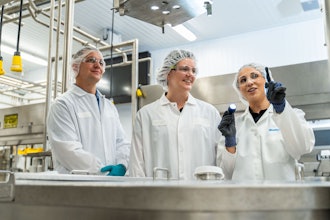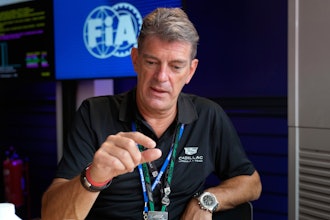Team Tackles Tiny Toy Troubles
A team of researchers from the University of Science and Technology of China, University College London, and the Chinese University of Hong Kong have pooled their collective brain power to address a problem that has been crippling the industry: waste in wind-up toys.
The team of computer scientists came up with a system that should speed the development and manufacturing of new wind-up toy designs. It turns out that all wind-up toys essentially have one of eleven basic elemental designs that make the minions dance, the crabs crawl, and the crazy bunny-heads-on-sheep-bodies fly (at least they're creative).
The designs trim a lot of wasted material out of each design. As a result, the toys consume less energy -- that means the sheep bunny abomination flies a little further with every twist of the knob.
With the system, you input your parts that you want to move as well as how you want to move them, and it the program gives you a plan as to which elemental mechanism to use, and how to attach it to the clockwork motor attached to a spring key.
The idea is that now DIYers and makers can 3D print their own designs and use the system to make it move. Personally, I'm going to make a tiny John McClane that army crawls through a ventilation shaft. It's a work in progress.
Living Tattoos Diagnose Chemical Exposure
Engineers at MIT have made what they are calling "living tattoos," thin, transparent patches covered with live bacteria cells in the form of a tree. The cells are mixed with hydrogel so that they can be 3D printed onto the tattoos. Each branch of the tree is lined with cells that respond to different chemicals. When the patch is exposed to a particular chemical, regions of the tree light up to identify the chemical exposure.
To test the patch, researchers smeared chemical compounds onto the back of a test subject’s hand. They then applied a hydrogel patch which, over several hours, lit up as the bacteria sensed the chemicals. The researchers say that their work could be used to make "active" materials for wearable sensors and interactive displays, although the diagnostic timeline may need to be sped up depending on the chemicals in question.
Next, the researchers will continue to make more patches and stickers that detect a wider variety of chemicals.
Underwater Drone Spots Supersonic Aircraft Prototype from the ‘50s
The Avro Canada CF-105 Arrow was a delta-winged supersonic interceptor aircraft developed in the late 1950s. When the aircraft was in development, numerous tests were conducted from the shore of Lake Ontario. The jet propulsion engines and prototypes are still scattered over the lake, and a large public interest about the fighter planes remains intact because the program was abruptly shut down in 1950s.
The events surrounding the cancellation play into a popular conspiracy, because in February 1959, development was shut down suddenly, and two months later, the assembly line, tooling, plans and existing air frames and engines were ordered to be destroyed. Officially, Canada was out of the bomber business, and moving into ballistics.
The day the program was shut down is known is “Black Friday” because it put 14,528 Avro employees out of work, as well as nearly 15,000 others within the supply chain.
DEDAVE is an autonomous underwater vehicle developed by researchers at the Fraunhofer Institute of Optronics, System Technologies and Image Exploitation. It can reach depths of 6,000 meters and explore the seabed for sources of oil or minerals. It has a 3.5-meter-long lightweight construction, and it was recently licensed by Kraken Robotics, a maritime tech company that renamed it ThunderFish Alpha.
From July through September, the ThunderFish Alpha searched the bottom of Lake Ontario, and found 400 different objects. Only 100 of them have been examined so far, but two of the finds have proven to be the lost Arrow supersonic interceptor aircraft models. The prototypes are scheduled for salvage by the end of the year.
The search has thus far been a huge success, since people have been looking for wreckage of the supersonic aircraft, and answers, since the program was shut down nearly 60 years ago. Kind of makes you wonder about what they will find once they get it to the surface. We shall see.
This is Engineering By Design with David Mantey.



















